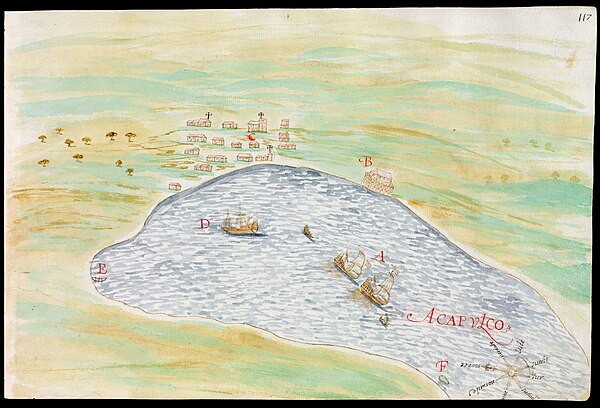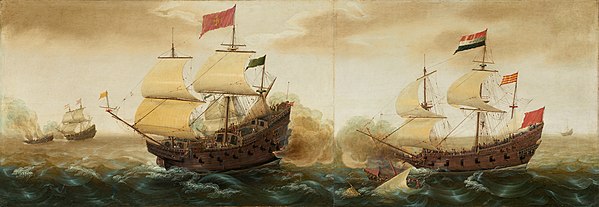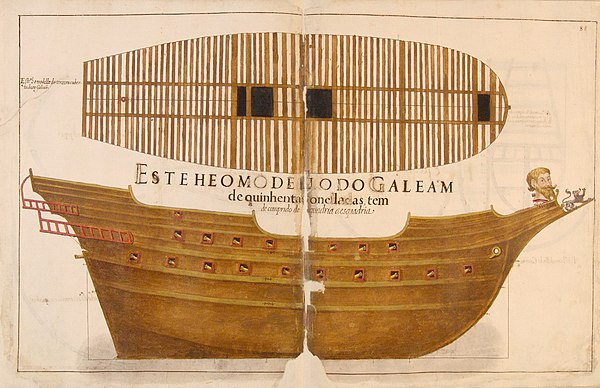San Juan Bautista (ship)
Videos
Page
San Juan Bautista was one of Japan's first Japanese-built Western-style sailing ships. She crossed the Pacific in 1614. She was of the Spanish galleon type, known in Japan as nanban-sen.

Replica of the Japanese-built 1613 galleon San Juan Bautista, in Ishinomaki, Japan.

Nicolás de Cardona, in his 1632 report submitted to the king of Spain, included a view of the bay and city of Acapulco, mentioning the presence of "a ship from Japan" (letter "D"), probably the San Juan Bautista (Gonoi, p53). Cardona was in Acapulco between the end of 1614 and March 21, 1615. The full legend reads: A. The ships of the expedition. B. The castle of San Diego. C. The town. D. A ship that has come from Japan. E. Los Manzanillos.

The San Juan Bautista is represented in Claude Deruet's painting of Hasekura Tsunenaga in Rome in 1617, as a galleon with Hasekura's flag (red swastika on orange background) on the topmast.

Itinerary and dates of the travels of Hasekura Tsunenaga
Galleon
Videos
Page
Galleons were large, multi-decked sailing ships developed in Portugal and Spain and first used as armed cargo carriers by Europeans from the 16th to 18th centuries during the age of sail and were the principal vessels drafted for use as warships until the Anglo-Dutch Wars of the mid-1600s. Galleons generally carried three or more masts with a lateen fore-and-aft rig on the rear masts, were carvel built with a prominent squared off raised stern, and used square-rigged sail plans on their fore-mast and main-masts.

A Spanish galleon (left) firing its cannons at a Dutch warship (right). Cornelis Verbeeck, c. 1618–1620

A Spanish galleon

Technical drawing of a late 16th century or early 17th century Portuguese galleon, featured in the Livro de Traças de Carpintaria

Model of an English galleon sporting four mast types: (left to right) • Bonaventure mizzenmast, typically lateen-rigged and shorter than the main mizzen. • Mizzenmast, typically shorter than the foremast and lateen-rigged. • Mainmast, the tallest mast and, on vessels with more than three masts, the most centrally located. • Foremast, the second-tallest mast.